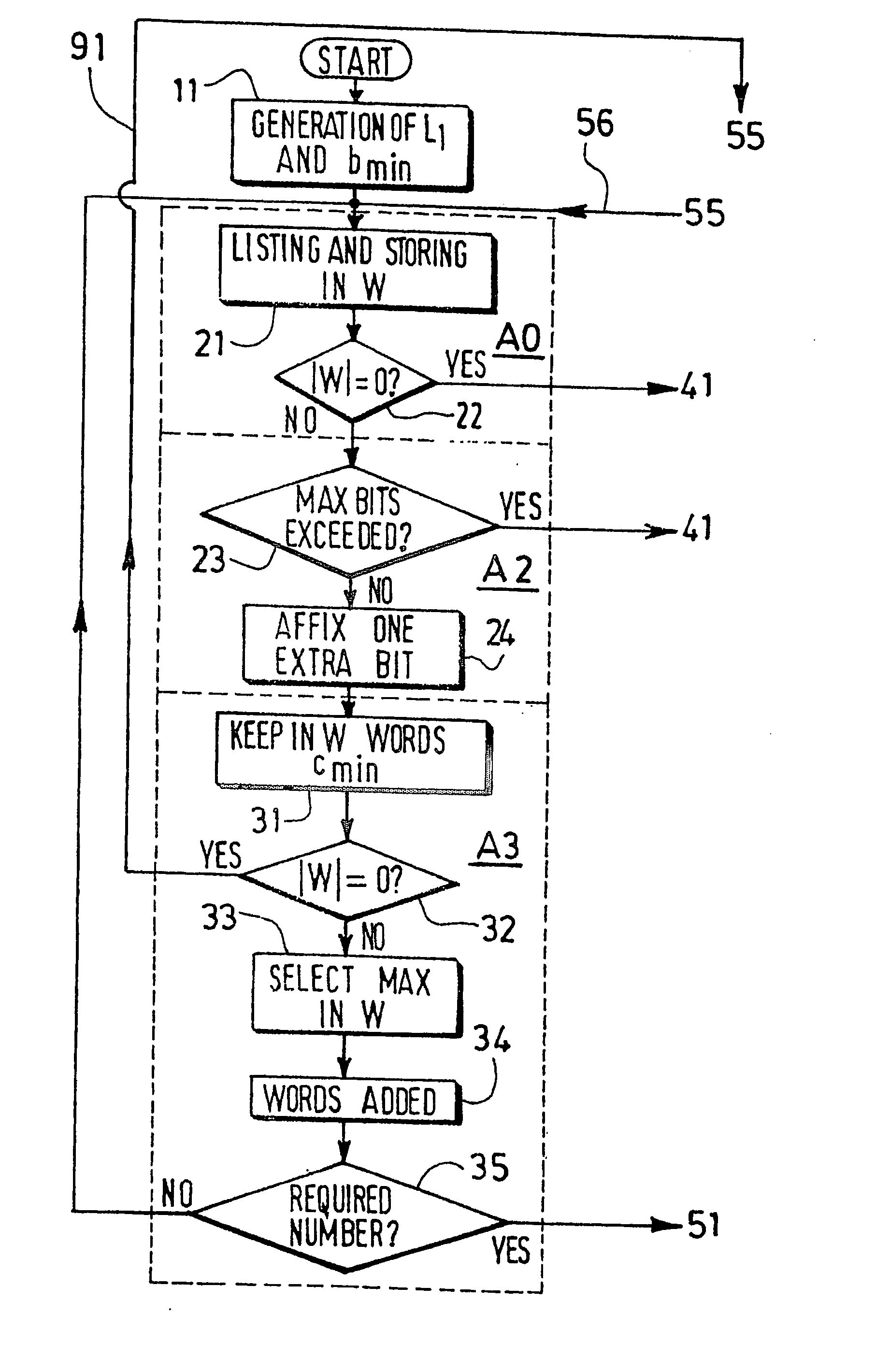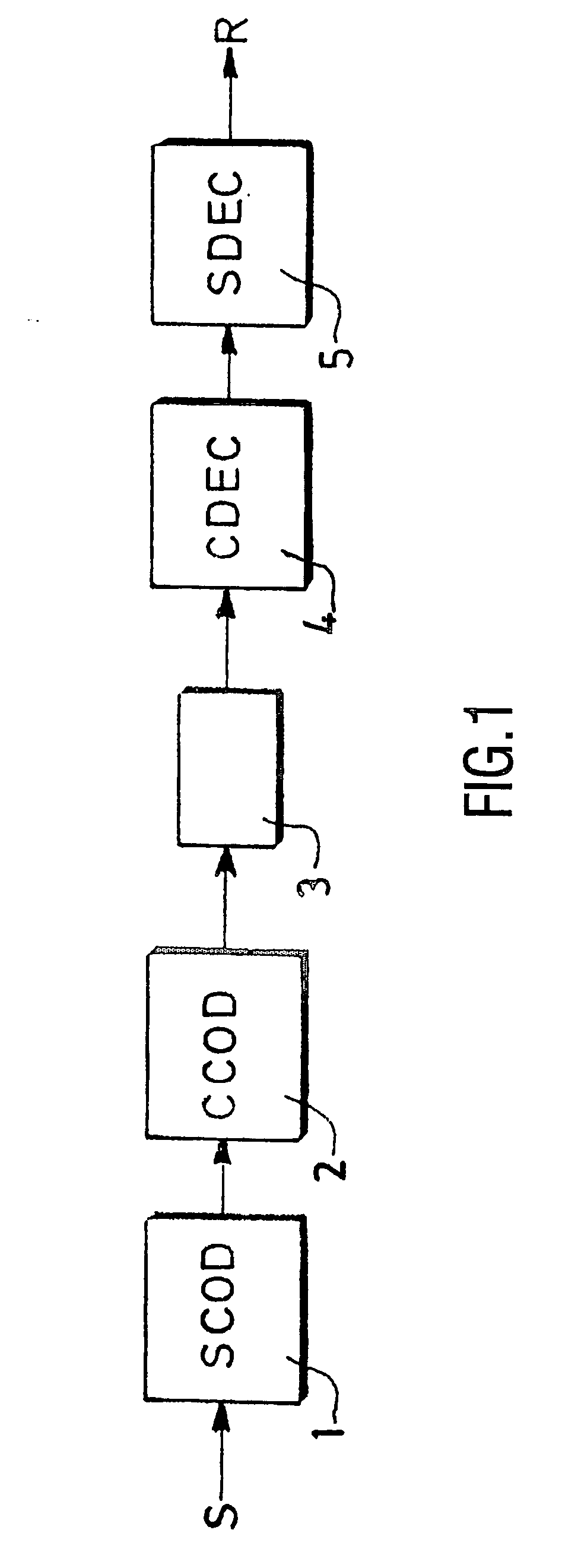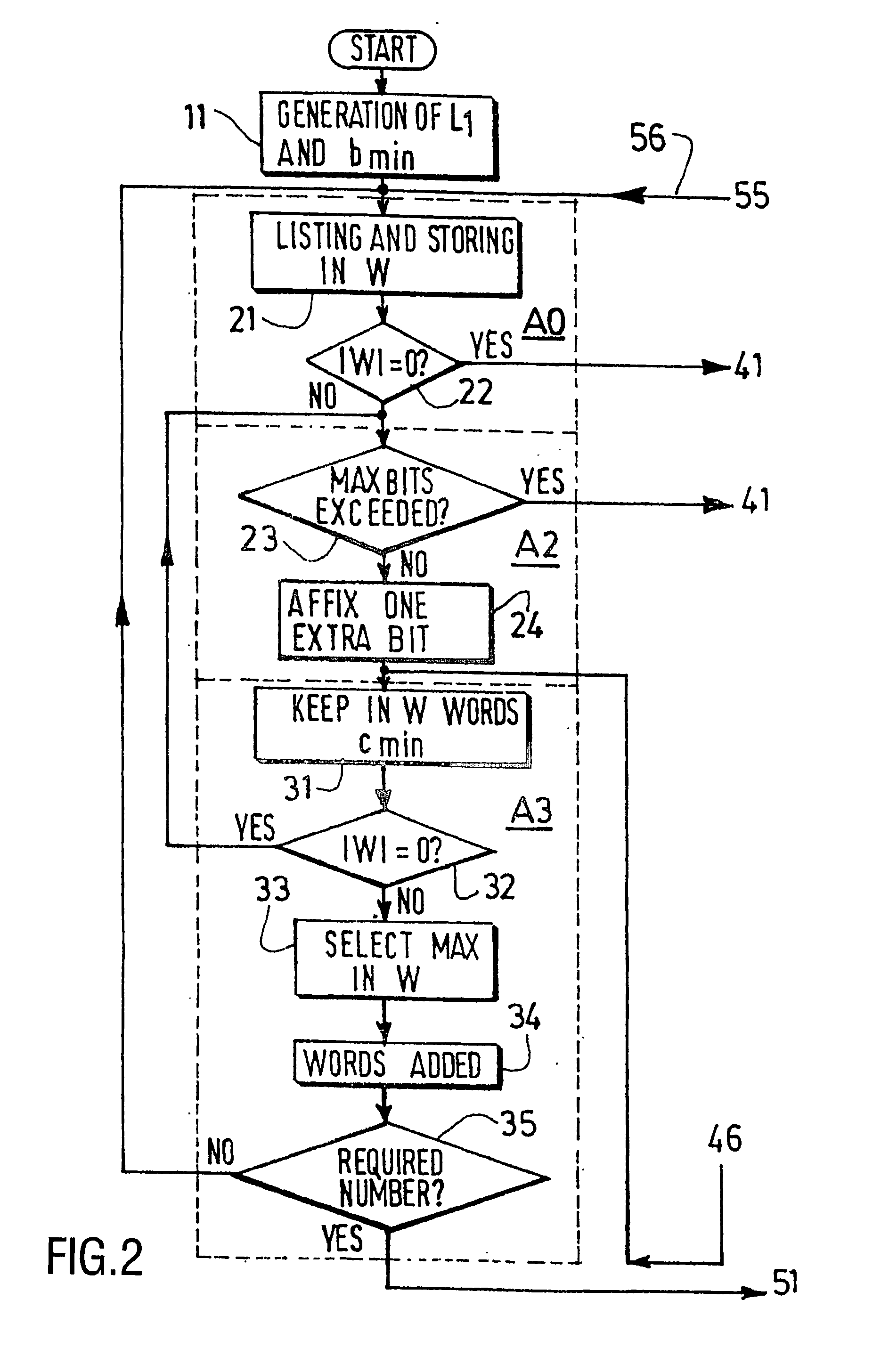Method and device for building a variable-length error code
a technology of error code and variable length, which is applied in the field of building variable length error code, can solve the problems of reducing affecting the compression performance of the best code, and consuming a lot of time to build the code, and achieves the effect of small length
- Summary
- Abstract
- Description
- Claims
- Application Information
AI Technical Summary
Benefits of technology
Problems solved by technology
Method used
Image
Examples
Embodiment Construction
[0063] Considering the evolution of the codewords stack in the classical Heuristic process previously recalled, it may be proposed to perform the codeword deletion not only in the last obtained codewords group, but more generally in any given length value group, in order to make possible to go back directly to smaller lengths, i.e. to skip many algorithm steps in cases where there are too many small length codewords.
[0064] Denoting by Ls (with s for: skip) the length to which the algorithm will skip back to in the codeword deletion stage, it is therefore proposed, in the present so-called Ls optimization, to skip parts of the original Heuristic algorithm by carefully jumping to lower lengths when looking for codewords to be deleted (however, when the considered codewords group length L is smaller than Ls, the classical method is obviously applied and the deletion is done within the group of length L). With respect to the previous fifth part (phase A4) of the “noHole” and “Heuristic...
PUM
 Login to View More
Login to View More Abstract
Description
Claims
Application Information
 Login to View More
Login to View More - R&D
- Intellectual Property
- Life Sciences
- Materials
- Tech Scout
- Unparalleled Data Quality
- Higher Quality Content
- 60% Fewer Hallucinations
Browse by: Latest US Patents, China's latest patents, Technical Efficacy Thesaurus, Application Domain, Technology Topic, Popular Technical Reports.
© 2025 PatSnap. All rights reserved.Legal|Privacy policy|Modern Slavery Act Transparency Statement|Sitemap|About US| Contact US: help@patsnap.com



